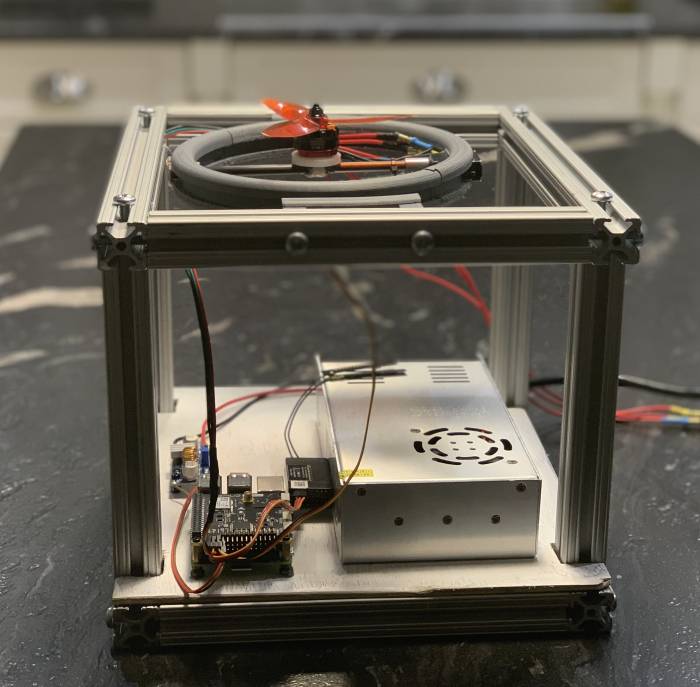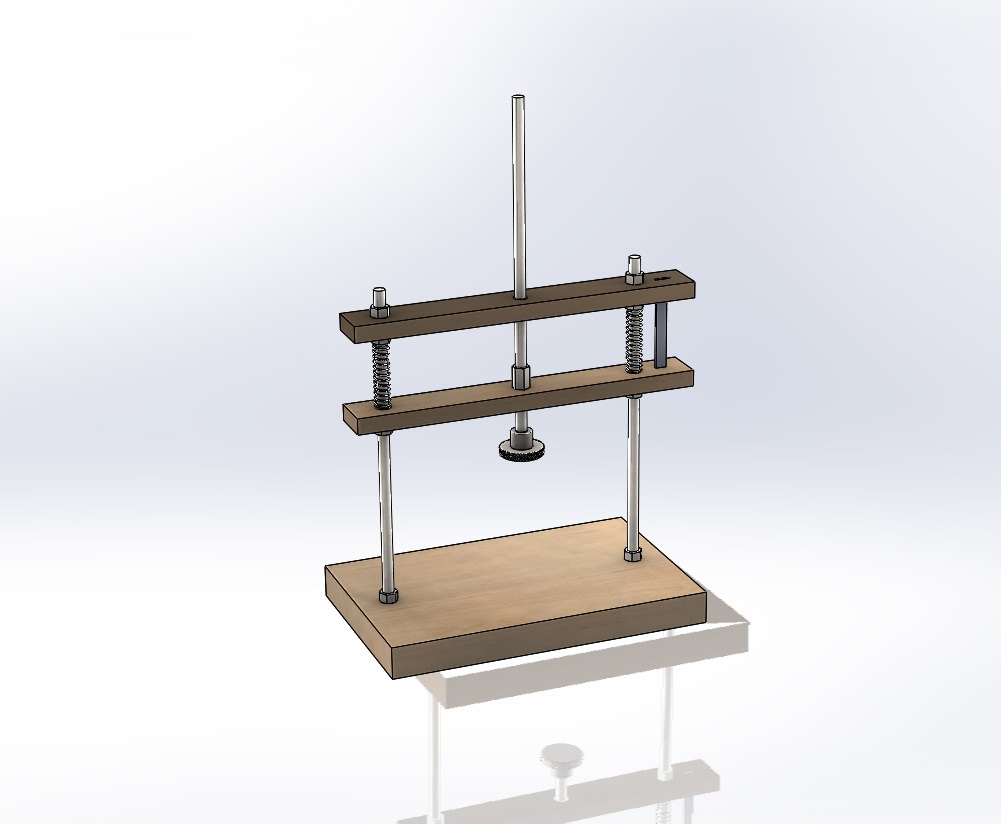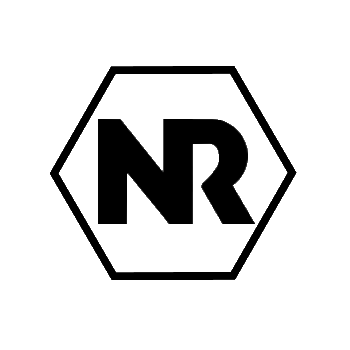High Precision CNC Design
The motivation for this project was to design an affordable, relative to comparable commercial options available, 3-axis CNC machine with a large build volume that is capable of achieving tight machining tolerances. In non-industrial grade CNC machines, the user must generally decide between a lead screw-driven design with a small build volume or a belt-driven design with a large build volume. The disadvantage of belt-driven designs is the amount of play in the drive chain, especially the rubber driving belt, as well as the lack of rotational resolution; that is, the distance the cutting tool travels with one rotation of the stepper motor or the number of rotations of the stepper motor required to move the cutting tool 1”. Given the ultra low-tolerance mechanical contact in a lead screw design, the rotational resolution is an order of magnitude higher than that of a belt-driven system.
The other limitation on consumer-grade CNC machines is the lack of z-axis adjustment and travel. While most CNC machines will have 2-3” of z-axis travel, this design has 9.5” and it can be easily modified to extend this capability if required. This added z-axis height dramatically increases the versatility of the machine, allowing it to machine on large blocks of wood rather than just thin sheets or boards.
The design of this CNC machine uses a stationary base with guide rails that guide the gantry for movement in the x-direction. There is clearance provided for the gantry on both sides of the build surface so that the full length is usable. The current configuration of the machine just has a router tool integrated onto the tooling assembly, but the clearance on both sides of the build surface allows for a second tool, such as a laser cutter/engraver, to be mounted on the other side of the gantry.
The entire frame is made of T-slotted aluminum for its versatility of attachments, structural rigidity, and ease of machining. Linear ball bearings are used on all guide rails to minimize moving friction. Each axis has an acme threaded lead screw driven by a stepper motor.
The x-axis of the machine is guided by two horizontal rods, one on either side of the machine, and is driven by an acme lead screw under the build surface. It is supported by the stepper motor on one end and a 3D printed mounting bracket on the other end. The mounting bracket has a press-fit sleeve bearing to reduce rotational friction between the lead screw and bracket.
The x-axis drive assembly connects to the gantry via a t-slotted cross-frame piece and this connects to the lead screw through a 3D printed adapter piece. This adapter is made in two identical halves, houses an acme nut, and has thru-holes for holding the two halves together. The stepper motor is attached to the frame of the machine with a 3D printed mount.
The gantry houses the driving assemblies for the y and z axes as well as the tool being used for machining. The design utilizes inward-facing guide rails for the y-axis to make the assembly as compact in the x-direction as possible. This reduces the size of the clearances needed for the gantry on either end of the build surface and the overall footprint of the machine. The y-axis motion is controlled in the same fashion as the x-axis: an acme lead screw, guide rail, and stepper motor. The difference here is that the y-axis assembly is mounted on two guide rails which allow it to move up and down, providing the z-axis movement for the machine.
The tooling assembly is made of a spindle router, clamp, and a 3D printed mounting plate. It attaches to the lead screw with an acme nut and has a linear ball bearing for sliding on the guide rail. It is important to note that the holes seen in the mounting plate for the lead screw are intentionally oversized so that the lead screw only contacts the nut, otherwise there would be a large amount of friction between the lead screw and mounting plate. This is avoided by inserting a sleeve bearing.
The z-axis drive components are attached to the same cross-frame piece as the y-axis components. Two guide rails with linear ball bearings provide the z-axis movement. The stepper motor for the z-axis is attached to the cross-frame piece with a 3D printed mount and the acme rod that drives the z-axis utilizes the same adapter brace design as the x-axis to attach to the top of the gantry frame.
The above table shows the Bill of Materials (BOM) for the CNC machine, including the router tool. The before tax total for all parts is $437 and after tax $468. Coming in at under $500, this machine will outperform commercial models that are more than double the price (such as the popular WorkBee CNC) due to it’s z-axis adjustability. While some costs were saved on parts such as the T-slot brackets being ordered from AliExpress, the high precision parts, such as the acme lead screws and ball bearings, were selected from McMaster-Carr to avoid compromising system performance.
Other Projects
- All
- advanced manufacturing
- quadcopters
- solidworks/cad




